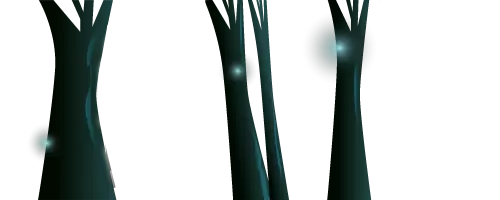8 SPECIAL FACTS ABOUT MAGIC MUSHROOMS YOU DIDN'T KNOW

Magic mushrooms have been used for thousands of years. The fact that they can open your mind and take you on an unprecedented trip is special enough. But there are many more extremely interesting facts about magic mushrooms to tell. Did you know, for example, that there is a type of magic mushroom that can produce serotonin just like humans? That besides psilocybin more psychoactive substances have been found in magic mushrooms? Below are 8 fascinating facts about magic mushrooms to marvel at.
What You Didn't Know About Magic Mushrooms
People all over the world use magic mushrooms. Its use can enrich your life: a trip can help you overcome fears and give you more insight into yourself and others. Whatever your reasons for using magic mushrooms, you will probably already think that these beautiful fungi are really special. But they're not just because of their psychoactive effects. Read below what other special facts are known about magic mushrooms.
8 Facts about magic mushrooms
1. A lot of mushrooms, but few of them are "magic"
Magic mushrooms are special: there are more than 5 million mushroom species worldwide, but only 200 of these contain the mind-altering substance psilocybin. It is not yet clear why magic mushrooms actually produce this substance. Probably not to make us happy. It will probably also yield something for the mushroom, but what, we don't know yet.
2. Mushroom with serotonin receptors
Panaeolus is a mushroom species that is not a magic mushroom, but actually it is. Because although this strain does not produce psilocybin, it does produce serotonin. This is a neurotransmitter, which we also produce ourselves. This affects our mood, and a deficiency of this substance can be an underlying cause of depression. Serotonin is chemically similar to psilocybin. The serotonin system is evolutionarily very old. These mushrooms may also have serotonin receptors on their cells and also use these substances for communication between the cells, just like if we. However, this has not yet been investigated.
3. Other Psychoactive Compounds in Magic Mushrooms
One of the other interesting facts about magic mushrooms is that psilocybin is the most well-known psychoactive compound, but there are others as well. For example, Inocybe aeruginascens, a tobacco-colored mushroom species with green-blue spots, produces three hallucinogenic substances: in addition to psilocybin, it also produces baeocystin and aeruginascin. I. aeruginascens, in Dutch called Green discoloring fiber head, is the only mushroom, as far as known, that produces aeruginascin. Scientists believe that this compound may have more therapeutic uses than psilocybin. The experiences of people who accidentally ate the mushroom indicate that the effects are pleasant: people felt calm, euphoric and had colorful, mystical experiences.
4. Mushroom use since the dawn of mankind
Magic mushrooms have been part of our lives since time immemorial. The indigenous tribes in North Africa used magic mushrooms about 11,000 years ago. There are paintings on rocks that seem to depict the use of magic mushrooms and their effects.
5. There are also unknown magic mushrooms
We know about 200 different magic mushrooms, but there are also many that have not yet been researched. In Australia, for example, there are about 30 types of psychedelic mushrooms, about which little is known. Mycologist Dr. McTaggart, of the University of Queensland, will investigate these mushrooms to find out whether they are edible or poisonous and whether they have a have medicinal effect.
6. Facts about magic mushrooms: Animals can trip too
If you see magic mushrooms growing in the forest, it is not only people who have access to these mushrooms. Even animals sometimes take a bite. In 2010, British tabloids reported that three pygmy goats in an animal shelter found some wild magic mushrooms and had eaten them. The kids didn't seem too happy about it: they reacted lethargic, vomited and stumbled about with difficulty. It took them two days to recover. So even though animals sometimes eat magic mushrooms, it is not a pleasant experience for them. So do not give magic mushrooms to your dog, cat or other pets!
7. Magic mushrooms can stimulate neurogenesis
Magic mushrooms can stimulate the growth of new brain cells (which is called neurogenesis). It was always thought that neurogenesis was not possible once you were an adult. Recent research shows that psilocybin can have a positive effect on the growth of new brain cells, and that may be useful in research into neurodegenerative diseases, such as Alzheimer's. (Amanita Muscaria)
(Amanita Muscaria)
8. Magic mushrooms' fascinating reproductive techniques
While the effects of magic mushrooms are fascinating, so is their growth. Magic mushrooms need wind to spread their spores. But of course they often grow in the middle of the forest, in sheltered spots. There is usually not much wind there. Magic mushrooms have found a special way to solve that problem. They do this by causing wind themselves (also the hallucinogenic Amanita Muscaria does this) causing the spores can be helped with the distribution. The mushrooms increase the rate at which water evaporates from their hats, increasing the amount of water vapor in the air around the mushroom. The water vapor and the cooler air created by evaporation make it easier for spores to float into the air. This technique helps to get spores up to 10 cm above the mushroom.
As you can see, magic mushrooms are fascinating. Fortunately, you can now easily grow your own magic mushrooms at home with a growing kit from Fresh Mushrooms, Mondo or All in One. These are easy to use, you don't need any knowledge or special skills. Dive into the fascinating world of the shrooms and experience what they can do for you.
Read more about: How to grow magic mushrooms with a grow kit in our blog!

















